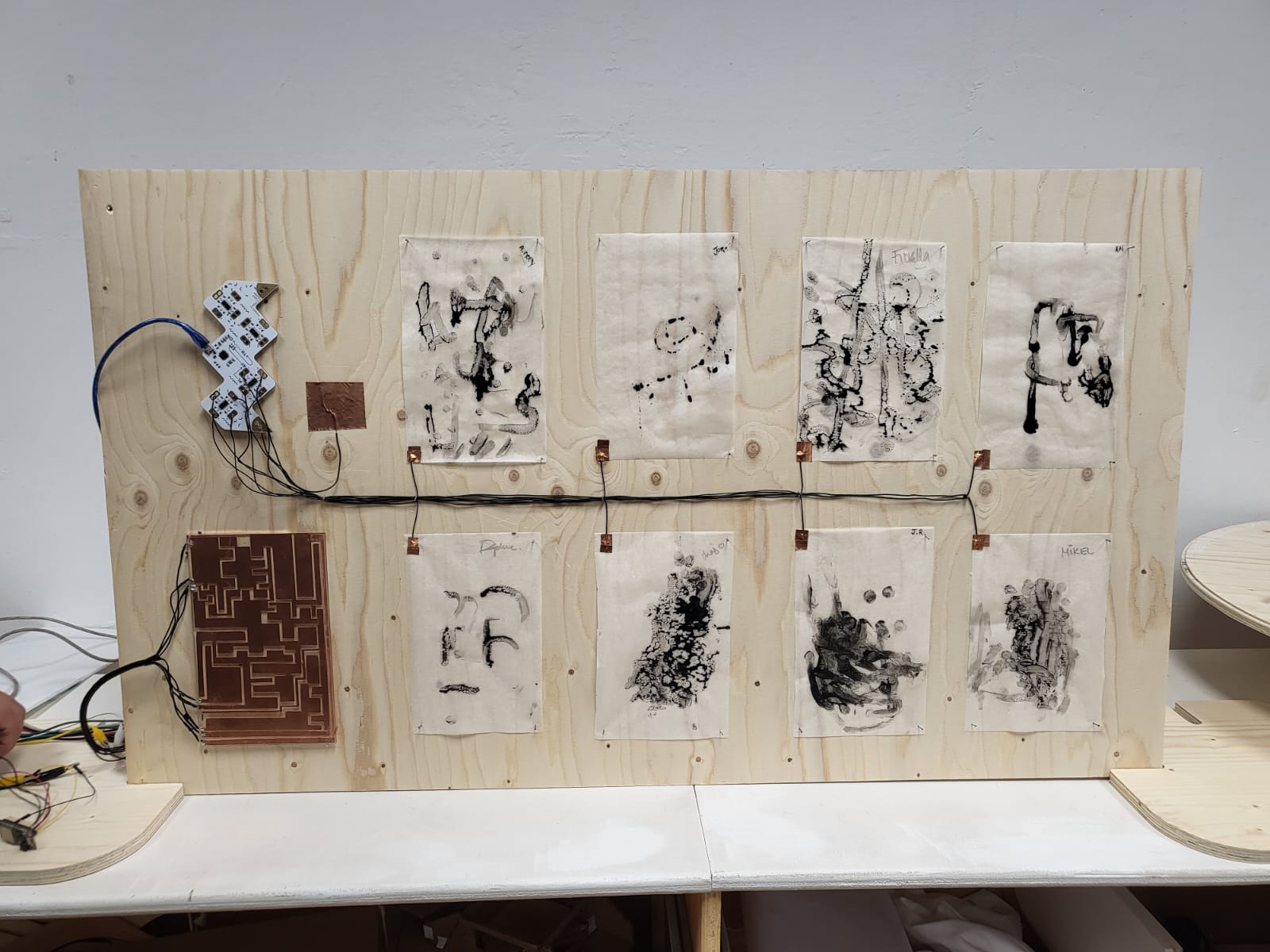Challenge3
Micro Challenge 3¶
Link to repo:
https://github.com/jose-hirmas/fab_challenge_3
Sensorial Decisions” is an ethical tool for generating awareness about how sound affects behaviour and human decisions.
Sensorial Desitions from Joaquin Rosas Sotomayor on Vimeo.
Concept of the Project
For this challenge, we are exploring how sound affects humans decisions.
Based on design ethics, we started discussing about the non-neutrality of design, boundaries between technology and design, how design choices influence the functionality of society and the re-creation of reality.
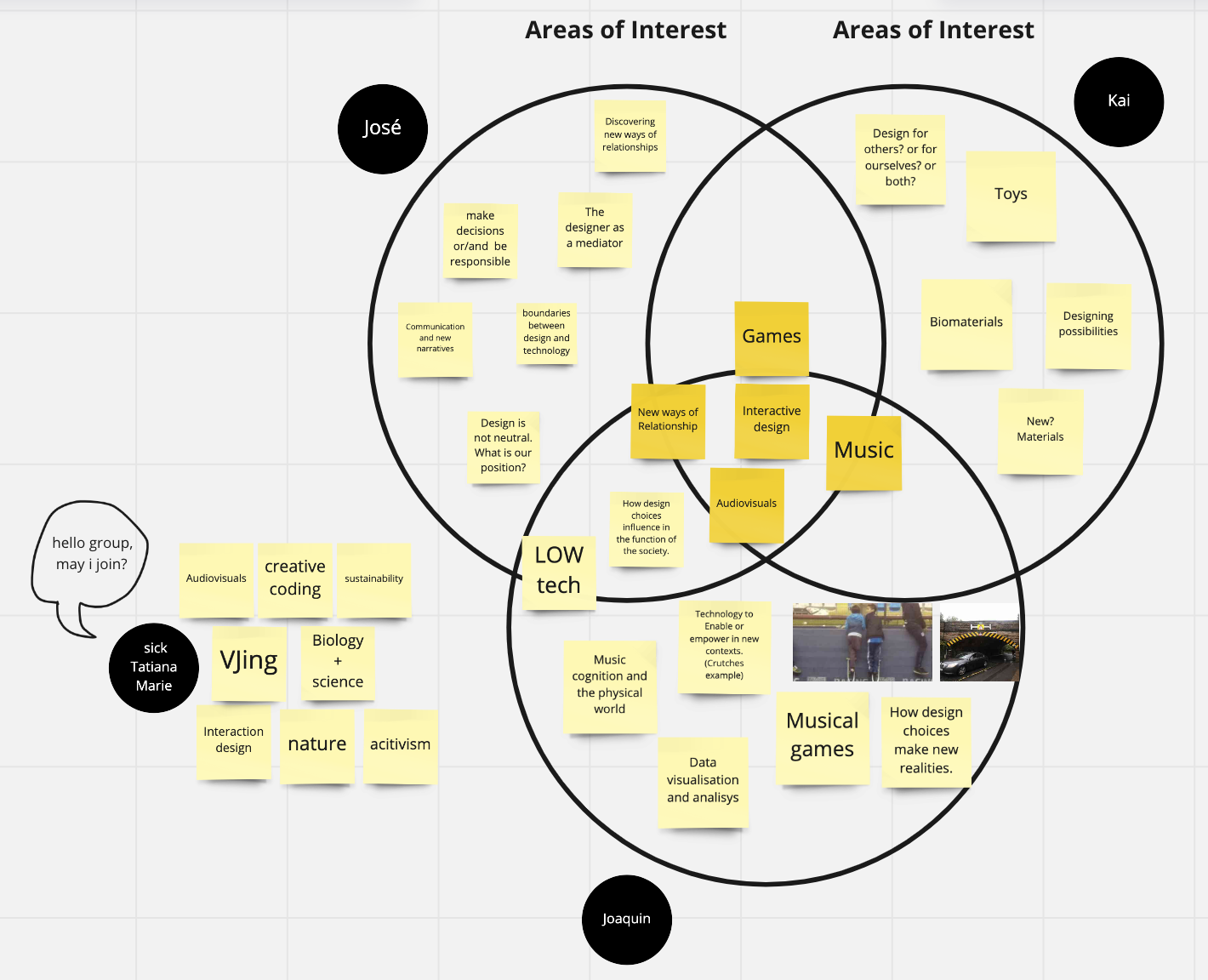
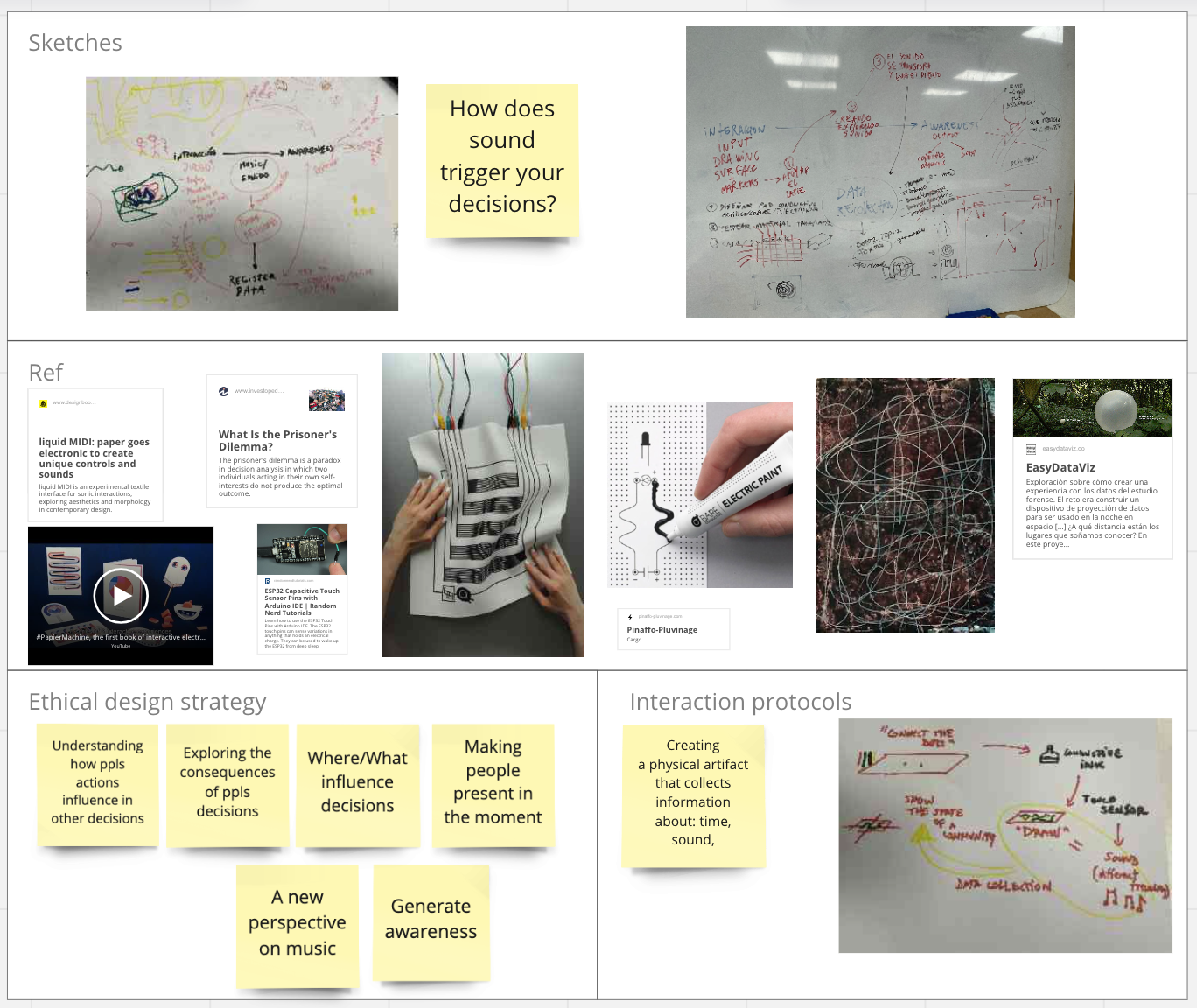
Our common areas of interest are music, games, communication, interactive design and low tech with the purpose of seeking new ways of relationship between humans and non-humans. Through this, we are developing an artifact that allows human interaction, guided by different sounds, creating a final output of sound-paintings. The human interaction (input) is about drawing and being guided by the sounds. The final output is the drawing itself.
Goals:
Visualize decision making through sound and drawings Work with electronics, Arduino, creativity and conductivity Explore unknown mediums: pure data, arduino, vinyl cutting copper Create a project that is realistic and doable in 4 days Exhibit the outcomes of decision making Generating awareness about the consequences of our actions Planification
Tuesday May 3rd:
-Brainstorm session -Define tools -Sketch ideas
Wednesday May 4th:
-Concept has been defined -Design of the conductive surface is designed -Test with 1 touchpin
Thursday May 5th:
-Test conductivity range with 8 touchpins -Test out different drawing tools: finger, marker, pen, pencil… -Laser cut base -Vinyl cut copper design -Program sounds with Pure Data -Prototype with aluminium foil -Complete prototype
Friday May 6th:
Invite classmates to interact with the artifact, record sound. Prepare final drawings and connect sound Exhibit the art (sound paintings) Execution
Honest Design
Human senses are the main tools for using our artifact. Our fingers for drawing, our hearing for guidance, and our vision for percieving the final outcome.
Technology (Arduino, Pure Data Music Software, Cables, and conductive surface) was used as a medium to “transform” the touching input into a sound output.
Solving problems with creativity
Marker: We wanted to use the big markers our drawing tools, except the conductivity was not optimal, when compare to using our fingers. We bypassed this problem by implanting 3 metal pins in the marker to enhance its performance. This gave us a range of 10 points as opposed to the previous 2-3, which was not reliable enough to make it usable.
Serigraphy: Initially, we wanted to place paper on top of the copper plaques, but we soon realised that this would add too much resistance and not create a big enough variance in signal. To solve this, we decided to directly draw with the finger on the conductive surface and after put a paper on top to press against it. So the final drawing will stay on the paper.
Paper: After programming the frecuencies to the copper surface, we tried different types of paper for drawing and finally choose the baking sheet because the conductivity worked well between the finger and the surface.
Future Development Oportunities
Analyzing the patterns of the drawing can be a way of understanding the proximity and relation that individuals have to specific frecuencies of sound.
How did you fabricate it (fabrication processes and materials)
Since we used mostly scrap materials, that shaped our process a lot. For the acrylic base, we found a tiny space on a panel inside the scrap section at the fab lab. We simply laser cut a 15 x 24 cm onto the acrylic using the standardised settings for that 4mm acrylic panel. For this reason, we did not save the file, because we figured that anybody could make a simple rectangle in Rhino.
As for the conductive copper, we designed it on Illustrator (screenshot above). You can find the file in the FILES folder.
Lastly, for the final display board, we simply used some scrap wooden CNC components from Anna’s previous design intervention, which clicked perfectly into a wooden panel.
Design & Fabrication files (open source or open format)
We wanted to use mostly scrap materials, so we did not have much fabrication processes like 3D printing, CNC or laser cut files. Instead, we have Illustrator + Arduino + Pure data files. You can find them in the FILES folder.
BOM (Build of Materials)
15 x 24 cm 4mm transparent acrylic panel 20 x 30 cm copper vinyl cut sticker 9 cables connecting board to Arduino/Playtronica Arduino Playtronica Waste scrap MDF wood

Prototyping the board using a scrap copper.
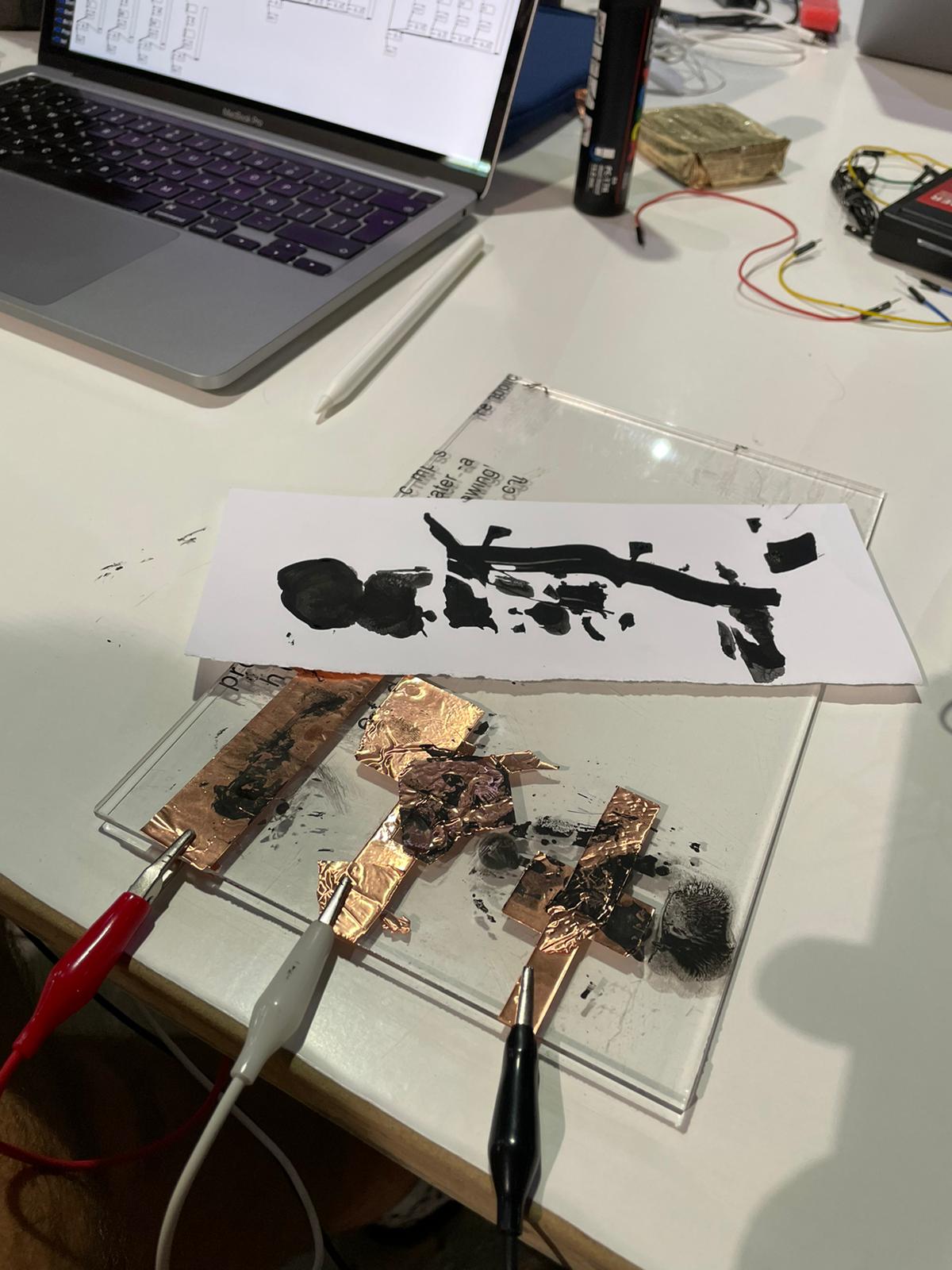
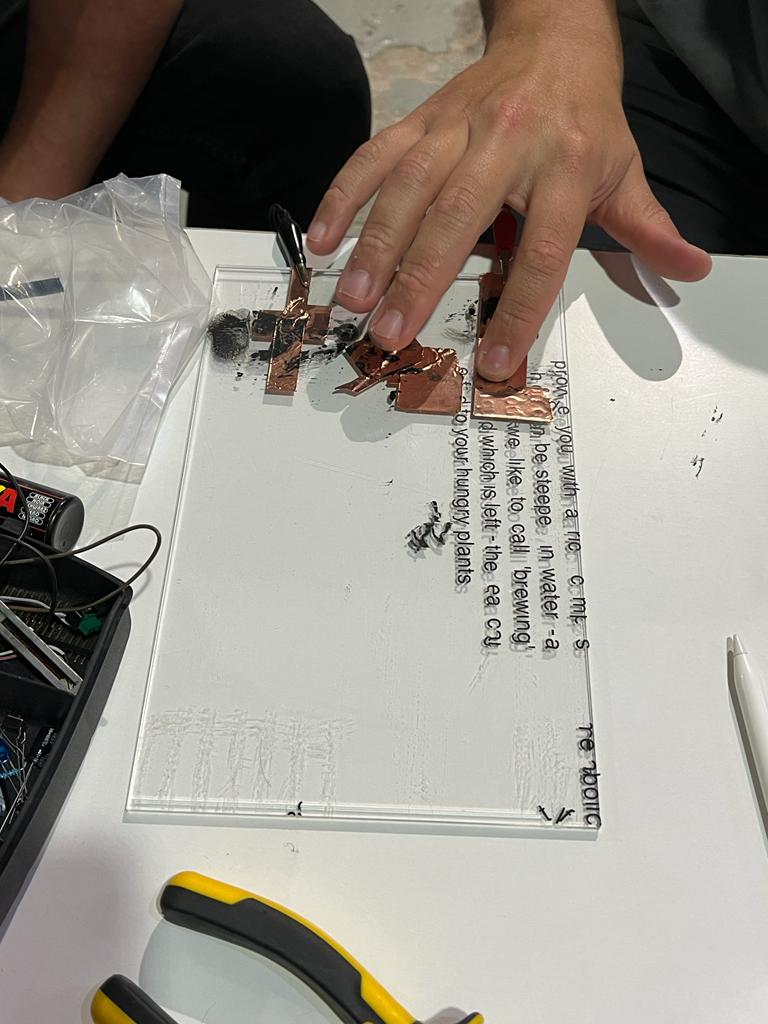
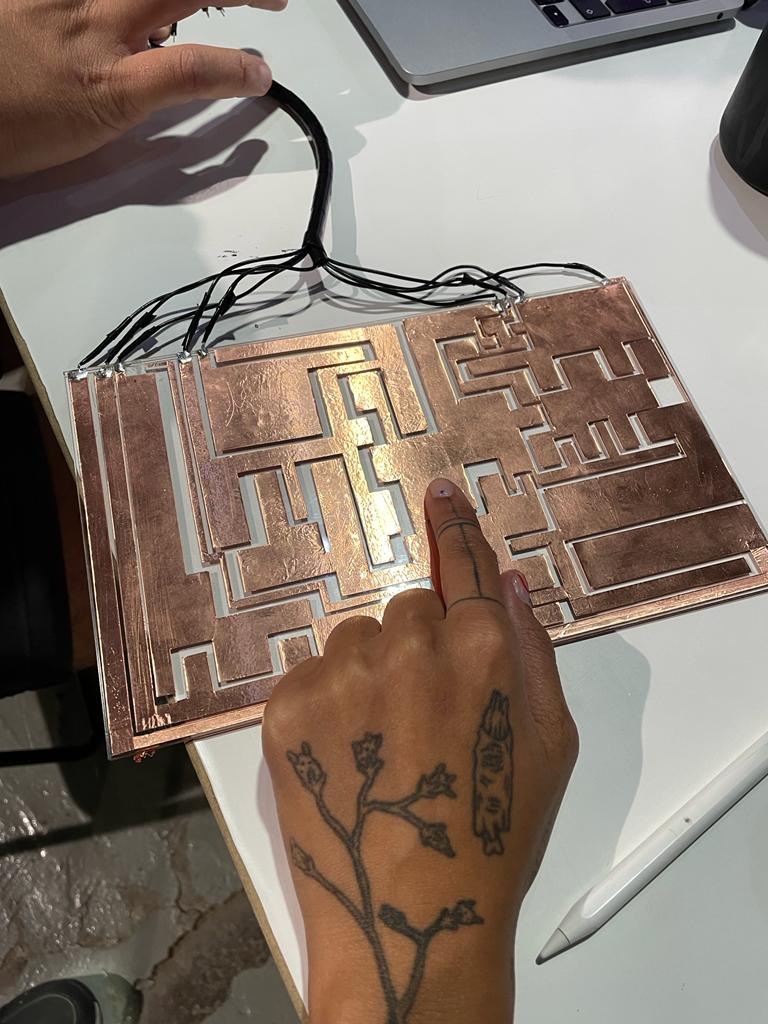
Pure Data simple configuration of frecuencies
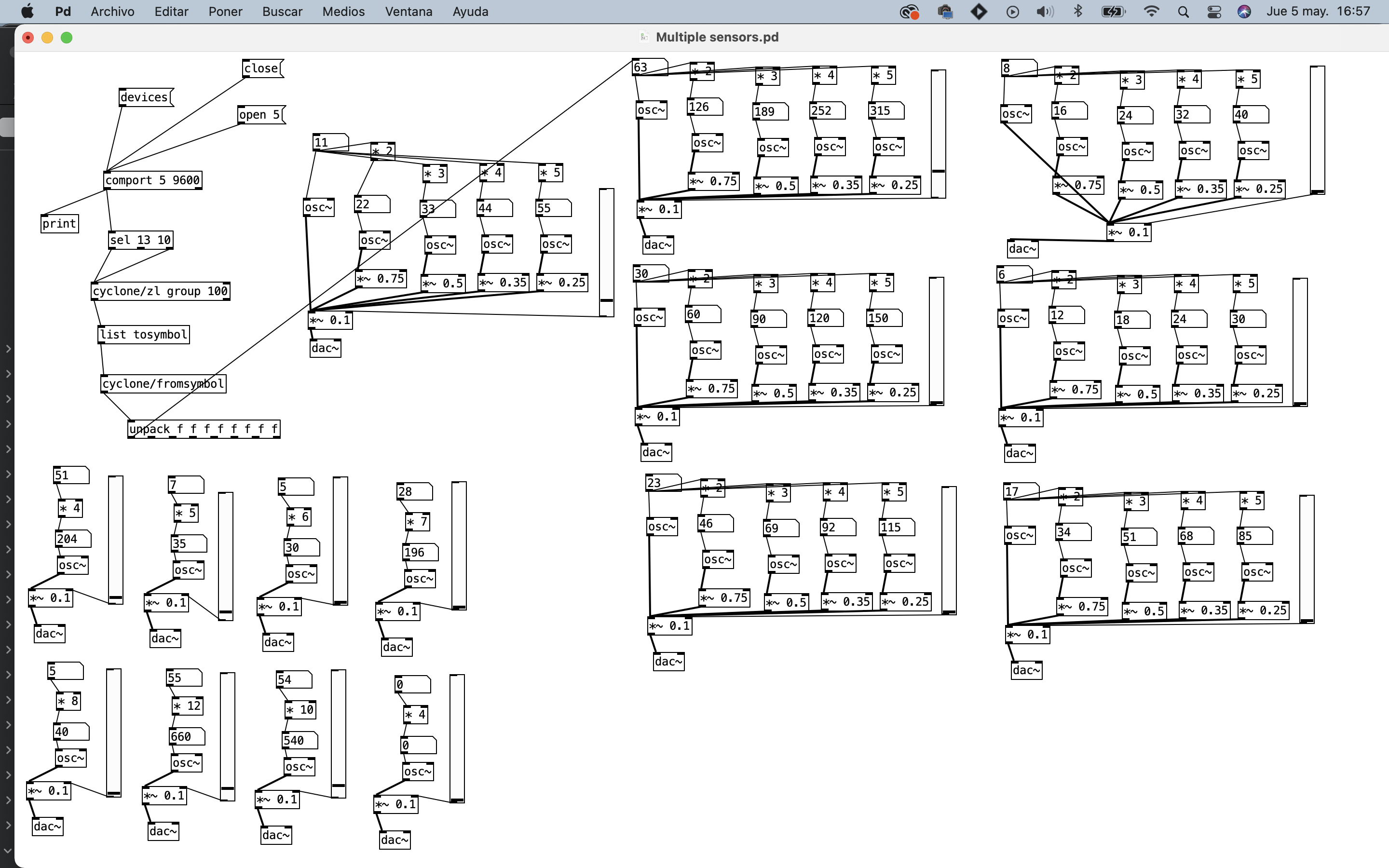
Concept planning of the intervention.

Design of the conductive surface, the shape are intersecting, to enable the movement, and avoid a normal keyboard.

Testing different touchpins and the conductiveness. An interesting thing is that the conductivity goes up when it has more metalic surfaces.
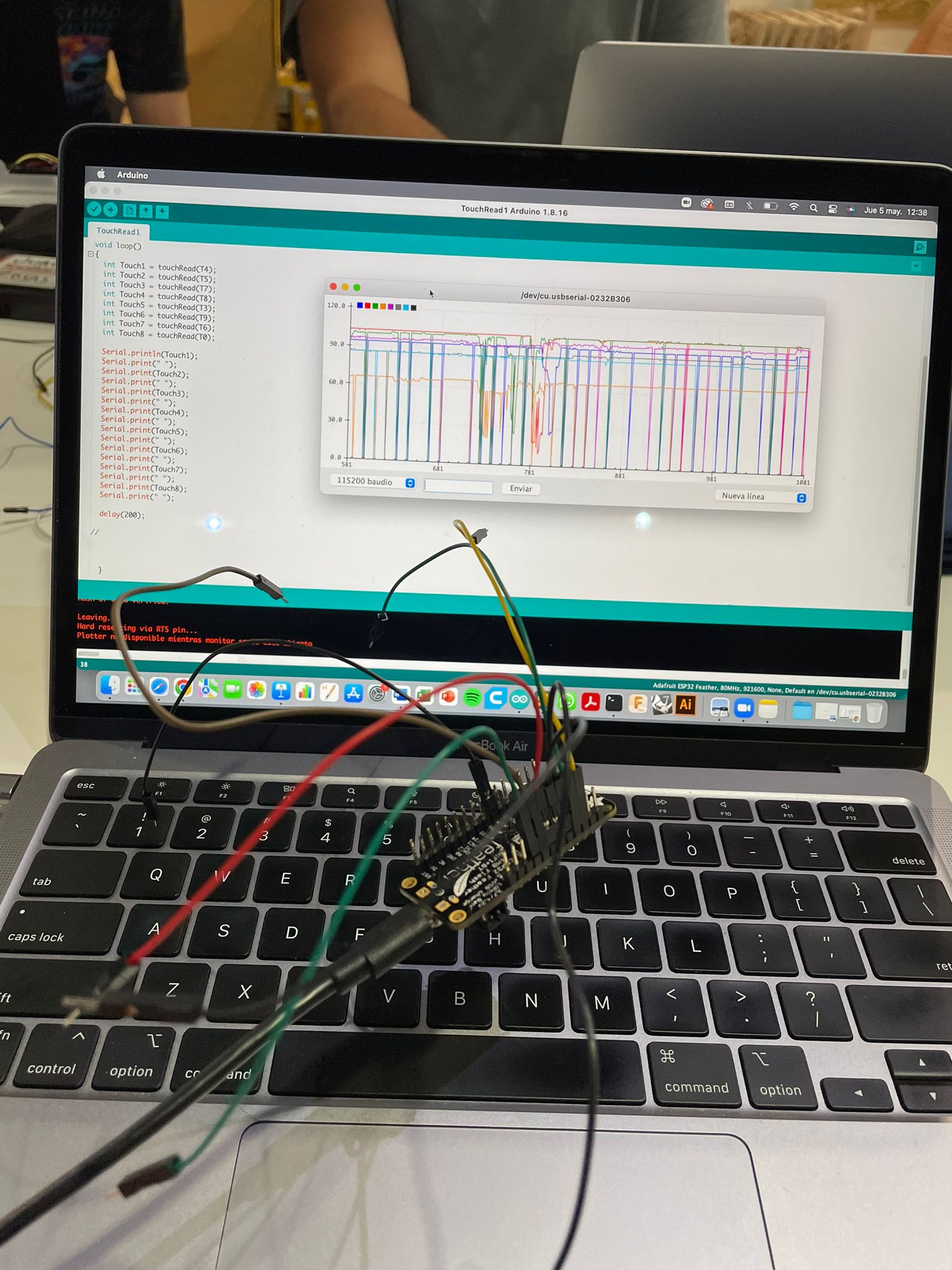
Final configuration for the surface. We usedsemitransparent paper to saw the coper tape.
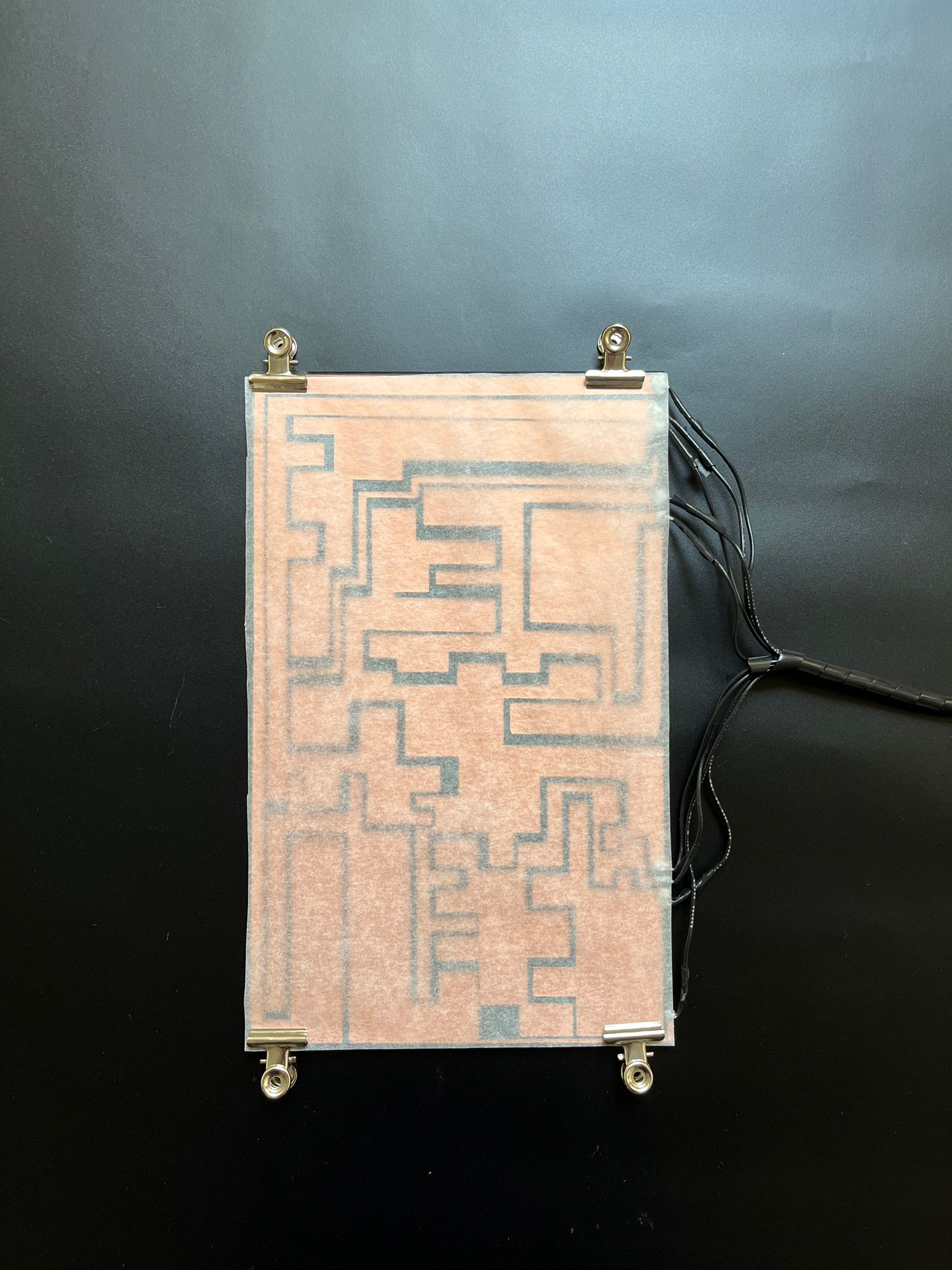
Example of one paper with painting. As the fingers were traveling around the surface, the cooper was reacting and triggering sounds.
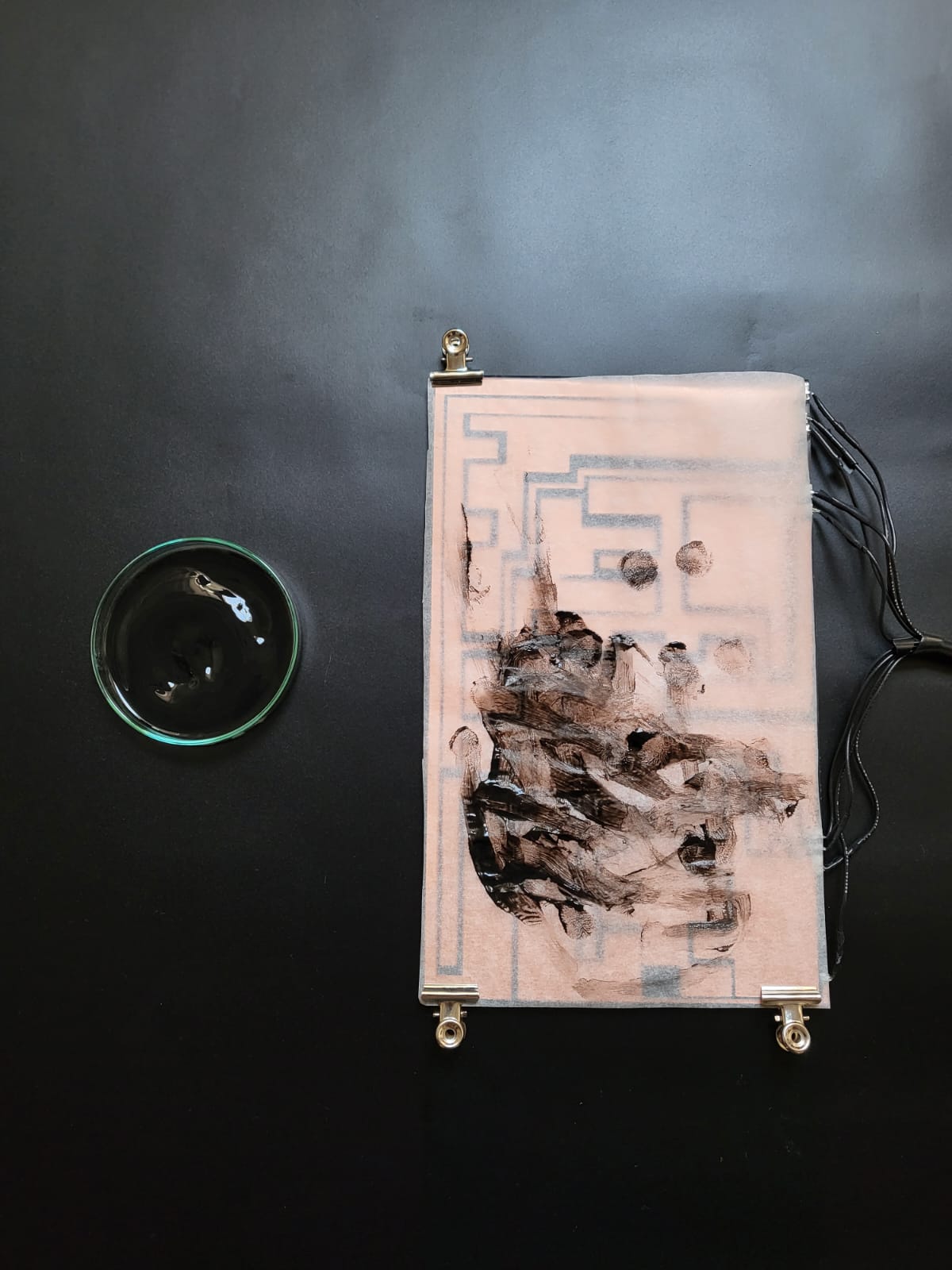
Final Result of the material created by our coleagues. Understanding how music creation makes an influence on their choices.
